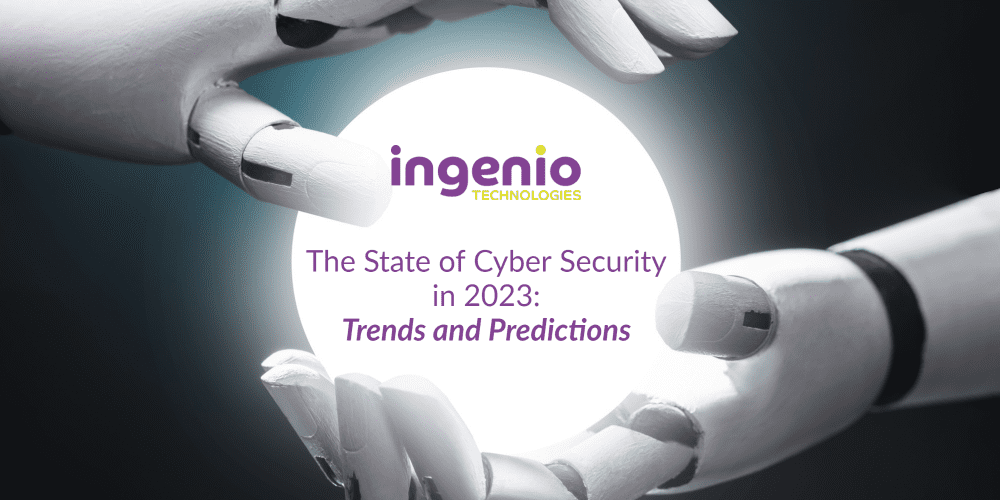The field of cyber security has always been dynamic and constantly evolving. With the ever-increasing threat landscape and the rapid pace of technological advancements, it’s essential to stay ahead of the curve when it comes to cyber security.
Let’s take a quick look at the history of cyber security:
History of Cyber Security
1960-1970
The history of cyber security dates back to the early days of computing. In the 1960s and 1970s, computer systems were primarily used by government agencies, large corporations, and universities. Security threats were relatively rare at that time, and cyber security was not yet a separate field of study. However, this changed as computer networks scaled in size and importance.
1980
In the 1980s, the first computer viruses began to appear. These small programs could infect a computer and spread to other systems. The first significant virus outbreak occurred in 1988 when the Morris worm infected thousands of computers. This incident highlighted the need for improved cyber security measures.
As the use of computer networks continued to expand in the 1990s, cyberattacks became more common. Hackers began to target not just government agencies and large corporations but also smaller businesses and individuals. The first major denial-of-service (DoS) attack occurred in 1999 when a group of hackers brought down Yahoo, eBay, and other popular websites.
In response to these growing threats, governments and businesses began to invest in cyber security. The first cyber security companies were founded in the late 1990s, and the field of cyber security began to take shape as a distinct area of study and practice.
2000
The 2000s saw a significant increase in cyber threats, including the rise of identity theft, phishing, and malware. The Stuxnet worm, discovered in 2010, was one of the most sophisticated cyberattacks to date, targeting industrial control systems in Iran. This attack demonstrated the potential for cyber threats to cause physical damage.
Today
Today, cyber security remains a critical concern for governments, businesses, and individuals. Cyber threats have continued to evolve, with new types of attacks such as ransomware, social engineering, and IoT-based attacks emerging in recent years. Cyber security professionals continue to work on developing new technologies and strategies to combat these threats and keep networks and data secure.
In this blog, we will take a look at the state of cyber security in 2023 and the trends and predictions that will shape the industry in the coming years.
Ransomware Attacks Will Continue to Rise
Ransomware attacks have been on the rise for several years, and the trend is expected to continue in 2023. Attackers are becoming more sophisticated and using advanced tactics to infiltrate networks and hold data hostage. As more organisations move to the cloud and adopt IoT devices, the threat of ransomware attacks will only increase. Therefore, it’s essential to have robust backup and recovery systems in place to mitigate the impact of a successful ransomware attack.
AI and Machine Learning Will Play a Bigger Role in Cyber security
Artificial intelligence and machine learning have already made significant inroads in cyber security. In 2023, we expect to see even more organisations using AI-powered solutions to detect and respond to threats. Machine learning algorithms can identify patterns in large datasets and learn from previous attacks to better protect against future threats. As cybercriminals become more sophisticated, AI and machine learning will be crucial in staying ahead of the threat landscape.
The Skills Gap Will Continue to be a Challenge
The cyber security skills gap is a well-known issue; unfortunately, it’s not going away anytime soon. As the number of cyber security threats continues to rise, there simply aren’t enough skilled professionals to meet the demand. In 2023, we expect organisations to invest more in training and upskilling existing employees. We may also see more automation in cyber security operations to help fill the skills gap.
Privacy Regulations Will Become More Stringent
With data breaches becoming more common, governments around the world are enacting more stringent privacy regulations. In 2023, we expect to see even more regulations designed to protect individuals’ data. This will put more pressure on organisations to take data privacy seriously and ensure they comply with relevant regulations. Failure to do so could result in significant fines and reputational damage.
Zero Trust Will Become the Norm
The Zero Trust model is gaining popularity as a way to protect against cyber threats. With this approach, every user, device, and application is treated as a potential threat, and access is only granted on a need-to-know basis. In 2023, we expect to see more organisations adopting the Zero Trust model as a way to improve their overall security posture.
In conclusion, the state of cyber security in 2023 will be characterised by an ever-increasing threat landscape, the continued rise of ransomware attacks, the growing importance of AI and machine learning, the ongoing skills gap challenge, more stringent privacy regulations, and the widespread adoption of Zero Trust. Organisations that are proactive in their cyber security approach and stay up to date with the latest trends and technologies will be better equipped to protect against emerging threats.


